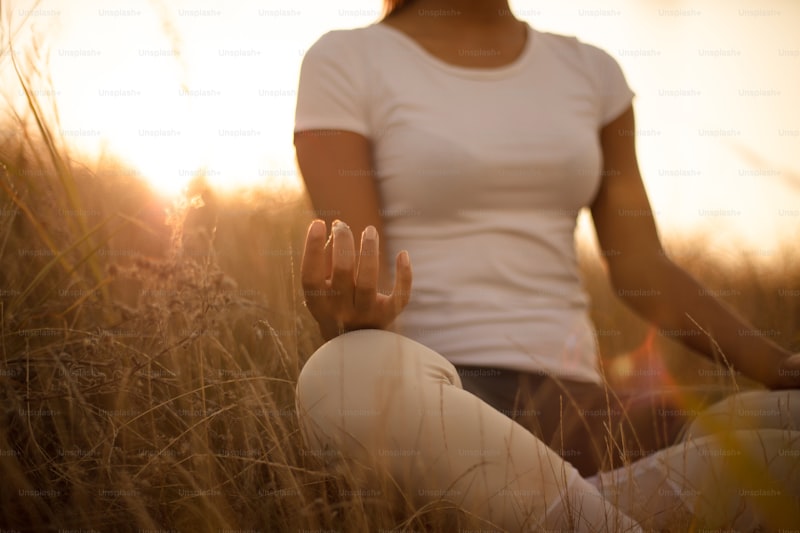Ever wondered how yoga could be your secret weapon for better emotional health? Let’s delve into how this ancient practice can transform not just your body, but your mind and soul as well.
Yoga isn’t just about striking impressive poses or twisting your body into shapes. It’s a holistic approach that integrates breathing exercises, meditation, and physical postures to harmonize the body and mind. When you roll out your mat and settle into a yoga session, you’re not just stretching muscles—you’re nurturing your emotional well-being.
One of the most powerful ways yoga enhances emotional health is through deep breathing techniques. These are more than just inhales and exhales; they are tools to calm the mind and reduce stress. Imagine inhaling peace and exhaling tension—it’s like a reset button for your emotions.
As you flow through yoga poses, you’re not only improving flexibility and strength but also releasing trapped emotions. Tight hips or shoulders often carry stress and negative feelings. Yoga helps release these tensions, creating space for positivity and emotional balance to flow in.
Have you ever finished a yoga session feeling lighter and more at ease? That’s because yoga stimulates the release of endorphins, the feel-good hormones. These natural mood boosters leave you with a sense of calm and contentment that can carry through your day.
Moreover, yoga encourages mindfulness—the practice of being present in the moment without judgment. This awareness extends beyond the mat into your daily life, helping you manage emotions more effectively. Instead of reacting impulsively, you learn to respond thoughtfully—a skill that nurtures emotional resilience.
Incorporating yoga into your routine doesn’t require hours of practice. Even a few minutes a day can make a noticeable difference in your emotional well-being. Whether you prefer a gentle flow or a rigorous practice, the key is consistency.
So, if you’re looking to cultivate better emotional health, consider rolling out your mat and exploring the transformative power of yoga. It’s not just a physical exercise; it’s a journey inward—one that can lead to greater emotional balance, resilience, and overall well-being.
Unlocking Serenity: Yoga Poses to Calm Your Mind and Boost Emotional Well-being
Imagine a pose that feels like a comforting hug for your body and mind. Child’s Pose does just that. Kneel on the mat, gently lowering your torso over your thighs and extending your arms forward or alongside your body. This gentle forward bend encourages deep breathing, relieving tension in your back, shoulders, and chest. It’s a moment of surrender, allowing you to let go of stress and reconnect with your inner peace.
Savasana is often called the ultimate relaxation pose, and for good reason. It’s a simple yet profound posture where you lie flat on your back, arms and legs relaxed, eyes closed. This pose is about complete surrender and stillness. It helps quiet the mind, reduce fatigue, and rejuvenate your entire being. It’s not just about physical relaxation; Savasana teaches us the art of letting go mentally and emotionally, making it a potent tool for enhancing emotional well-being.

Feeling scattered or anxious? Seated Forward Bend offers a way to ground yourself. Sit on the mat with your legs extended in front, then gently fold forward from your hips, reaching for your feet or shins. This pose stretches your spine, hamstrings, and shoulders, promoting a sense of calm and introspection. As you breathe deeply in this pose, you release tension in your body and mind, fostering clarity and emotional balance.
Bridge Pose is like a gentle heart opener that lifts your spirits. Lie on your back, bend your knees, and lift your hips toward the ceiling while keeping your feet hip-width apart. This pose not only strengthens your back and opens your chest but also stimulates your nervous system in a positive way. By opening your heart center, Bridge Pose can help release pent-up emotions and promote feelings of compassion and serenity.
Cat-Cow Pose is a dynamic duo that flows seamlessly to soothe your body and mind. Start on your hands and knees, alternating between arching your back upward (Cow Pose) and rounding it inward (Cat Pose) with each breath. This gentle flow warms up your spine, improves flexibility, and massages your internal organs. It’s a moving meditation that syncs your breath with movement, helping to calm your mind and uplift your mood.
Incorporating these yoga poses into your daily routine can be a game-changer for your emotional well-being. Each pose offers a unique way to reconnect with yourself, release stress, and cultivate inner peace. So, roll out your mat, take a deep breath, and embark on a journey to unlock serenity through the power of yoga.
Harnessing the Power Within: Yoga Techniques for Emotional Resilience
Yoga techniques for emotional resilience go beyond the mat. They delve into the realm of mindfulness, breath control, and harnessing the mind-body connection. Imagine yoga as your personal sanctuary, where each pose and breath works to calm the storm within. Whether you’re dealing with work pressures, relationship strains, or simply the ups and downs of daily life, yoga offers a pathway to center yourself amidst the chaos.

One of the key practices in yoga for emotional resilience is mindful breathing. Have you ever noticed how your breath reflects your emotions? During stressful times, our breath tends to become shallow and erratic. Through yoga, you learn to consciously deepen and slow down your breathing, signaling to your nervous system that it’s safe to relax. This simple act can instantly shift your emotional state from anxious to composed.
Another cornerstone of yoga for emotional resilience is the cultivation of present-moment awareness. How often do we find ourselves caught up in worries about the future or regrets about the past? Yoga teaches us to anchor our awareness in the here and now, fostering acceptance and clarity. By practicing mindfulness on the mat, you gradually develop the ability to stay grounded amidst life’s unpredictability off the mat.
As you flow through yoga poses, you not only stretch and strengthen your body but also release stored tension and emotions. Each pose offers a metaphorical journey—an opportunity to confront discomfort and find ease within it. Just as in life, yoga teaches us that growth often happens outside our comfort zones.
Embrace Balance: Yoga Practices to Manage Stress and Enhance Emotional Stability
Yoga, an ancient discipline originating from India, offers a holistic approach to wellness that integrates physical postures (asanas), breathing exercises (pranayama), and meditation. These practices work synergistically to calm the mind, relax the body, and restore inner harmony.
Imagine starting your day with a series of gentle yoga poses that stretch and awaken your body while simultaneously soothing your mind. As you flow through each posture, you engage in mindful breathing, syncing your breath with movement. This simple act not only enhances oxygen flow but also triggers your parasympathetic nervous system, promoting a state of relaxation.
The beauty of yoga lies in its adaptability. Whether you’re a beginner or seasoned practitioner, there are practices suited to your needs. For instance, if stress manifests physically as tension in your shoulders and neck, certain yoga poses like Child’s Pose or Cat-Cow can release this tightness, fostering a sense of ease.
Beyond the physical benefits, yoga nurtures emotional stability by encouraging self-awareness and acceptance. Through regular practice, you cultivate mindfulness—an ability to stay present in the moment without judgment. This mindfulness becomes a valuable tool in managing stress, as it empowers you to respond to challenges with clarity rather than react impulsively.
Incorporating yoga into your routine doesn’t require hours of commitment. Even a few minutes a day can yield profound benefits. Whether you prefer a sunrise session to greet the day or an evening practice to unwind, the consistency of practice is key.
As you embrace these yoga practices, observe how they ripple through your life. Notice how moments of stress become opportunities for growth, and how emotional stability becomes your anchor in turbulent times. Through yoga, you discover not only physical flexibility but also resilience of mind and spirit—a true testament to the power of balance.
From Stress to Zen: Integrating Yoga into Your Daily Routine for Emotional Health
Imagine this: your day starts with a gentle flow of yoga poses. As you stretch and breathe deeply, the tension in your muscles starts to melt away. It’s not just physical – yoga works its magic on your mind too. The controlled breathing and mindful movements help calm the storm of thoughts racing through your mind. It’s like hitting the reset button for your entire being.
One of the beauties of yoga is its adaptability. Whether you have five minutes or an hour, there’s a practice that fits into your schedule. Even a short session can bring noticeable benefits – increased clarity, improved mood, and a sense of inner peace that stays with you throughout the day.
Beyond the mat, yoga teaches valuable lessons in emotional resilience. It encourages you to embrace the present moment, letting go of worries about the past or future. This mindfulness spills over into your daily life, helping you navigate challenges with a clearer perspective and a calmer demeanor.
Moreover, yoga isn’t just about physical postures (asanas). It encompasses breathing techniques (pranayama) and meditation, each offering unique benefits for emotional health. Pranayama, for instance, enhances relaxation and reduces stress by regulating your breath, while meditation cultivates mindfulness and improves emotional stability.
Incorporating yoga into your routine doesn’t require fancy equipment or a studio membership. All you need is a quiet space, a comfortable mat, and a willingness to connect with yourself. Whether you’re a beginner or a seasoned yogi, the journey towards emotional well-being begins with that first mindful breath on the mat.
Ready to embark on this transformative journey? Embrace the power of yoga to turn stress into serenity, and pave the way for emotional health that radiates from within.
Mindful Movement: Yoga Sequences That Promote Emotional Healing
Imagine starting your day with gentle yoga poses that not only stretch your body but also soothe your emotions. Poses like Child’s Pose, where you kneel and stretch forward with your arms outstretched, offer a sense of security and calmness, helping you release any tension stored in your body. It’s like giving yourself a warm, comforting hug, allowing you to let go of the day’s worries and stresses.
As you flow into Cat-Cow Pose, moving gracefully between arching your back like a cat and gently curving it like a cow, you invite a sense of fluidity and flexibility into your emotional landscape. This rhythmic movement mirrors the natural ebb and flow of emotions, reminding you that it’s okay to embrace both strength and vulnerability in your healing journey.
Transitioning into Warrior Poses, such as Warrior I and Warrior II, strengthens not only your muscles but also your resolve to face challenges with courage and determination. These poses empower you to stand tall and grounded, like a warrior ready to conquer inner obstacles and embrace emotional growth.
Balance poses like Tree Pose or Eagle Pose encourage stability and focus, both physically and emotionally. By finding equilibrium in these poses, you cultivate a deeper sense of inner balance, allowing emotions to flow without overwhelming you.
Finally, conclude your practice with Savasana, or Corpse Pose, where you lie down comfortably, allowing your body and mind to integrate the benefits of your practice. It’s a moment of stillness and reflection, like basking in the warmth of sunlight after a refreshing rain shower.
Frequently Asked Questions
How Often Should I Practice Yoga to Improve Emotional Health
Discover how frequently practicing yoga can enhance emotional well-being. Learn about optimal practice frequency and its impact on emotional health.
What are the Benefits of Yoga for Emotional Well-being
Discover how yoga enhances emotional well-being through its holistic practices, promoting relaxation, stress reduction, and emotional balance. Learn how regular yoga sessions can cultivate mindfulness, resilience, and a sense of inner peace, contributing to overall mental health.
Which Yoga Poses are Best for Managing Stress and Anxiety
Discover effective yoga poses that help manage stress and anxiety with our concise guide. Learn about specific asanas proven to promote relaxation and calmness, fostering mental well-being.
What Should I Consider When Choosing a Yoga Class for Emotional Wellness
Choosing a yoga class for emotional wellness involves considering the instructor’s qualifications in teaching yoga for emotional health, the style of yoga offered (such as gentle or restorative yoga), the class atmosphere conducive to relaxation, and the location and timing that fit your schedule. Look for classes that emphasize mindfulness, breathing techniques, and a supportive environment to enhance emotional well-being.
Can Yoga Help with Depression and Mood Disorders
Discover how yoga can potentially alleviate symptoms of depression and mood disorders through its combination of physical postures, breathing exercises, and meditation techniques. Learn about the benefits and considerations of integrating yoga into a holistic mental health regimen.


